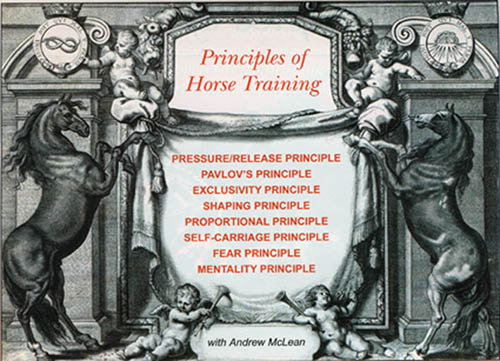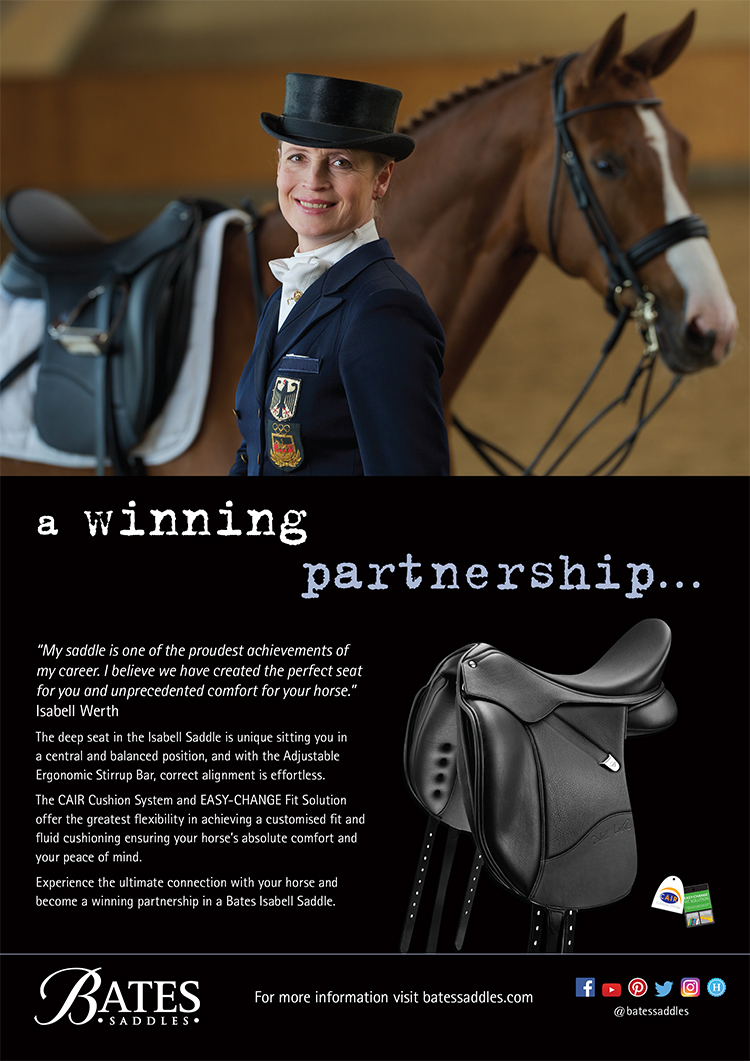Andrew McLean is widely known – as a rider, a trainer, a re-trainer, and a prolific author of articles and major books.
Andrew’s international reputation is steadily growing and recently he was invited to contribute to two text books, ‘Equine Behaviour – A guide for Veterinarians and Horse Professionals’ by Dr Paul McGreevy, and ‘The Behavioural Biology of the Horse’ by Dr Daniel Mills.
He was also invited to contribute entries to ‘The Encyclopaedia of Animal Behaviour and Animal Welfare’. Last year Andrew presented a paper ‘Learning Principles – the missing link in Equitation’ at a conference in Italy, and in October he is off to Glasgow to present another paper on training psychology.
Over the next few months in The Horse Magazine, Andrew will detail the Eight Training Principles that apply to all disciplines of horse training, in hand as well as under saddle.
Talking with Andrew McLean about working with horses is always comforting on one level, because it always relates back to his golden basics of stop and go. So is it boring? No, because Andrew is always expanding his thoughts from his basics, and so adding to the ease and enjoyment of handling our horses day by day.
“All equestrian work, whether it is in hand or in any discipline under saddle rests upon sound basics of stop and go. Dressage represents the most sophisticated development of stop and go and the quality of the training of these basic responses is the foundation for a relaxed, problem-free horse. The less the rein and leg aids mirror the horse’s responses, in the full spectrum, the more confused the horse becomes. From the viewpoint of any animal undergoing training, the more it can give consistent responses to the variety of signals, the more the animal’s world becomes predictable and controllable. The deeper that animal’s knowledge of training in terms of consistency of response, the greater the rapport between the trainer and the animal, because of the absence of stress afforded by predictability and controllability. This is the reason animals are able to learn cues, mild signals and aids in the first place. Horses are no different.”
“Over the time of my PhD, I studied the works of the most pre-eminent people in the behavioural sciences over the last century or so. People such as B.F. Skinner, who wrote over 400 papers on animal (and human) learning, C.J. Hull who measured and configured mathematical relationships in animal learning, and other remarkably innovative thinkers such as Pavlov and Thorndike. As a horseman and competitor myself, I couldn’t help but be impressed by the reality of their theory in equestrian performances that you see in a great cross-country, jumping and dressage performance.”
“The core of my interest lies in teasing out what it is, in objective rather than subjective terms, that makes great trainers and riders so great.
“In all disciplines, when training is good, the performance looks effortless, aids are invisible – it seems like magic. That’s how the myth of horse whispering arose.”
“Because most horse riders tend to deal with horses that already have some reasonable responses in the basics of stop and go, they are rarely aware of the proper order of horse training in terms of animal learning. So often you see and read about training various parts of the horse such as the head, neck or body before the legs are properly trained to go and slow. Yet most behaviour problems show up that the horse is not on the aids – the legs are under little or no control. I think it is essential that trainers realise that the primary training of the horse is of its legs – its mobility. The position and relaxation and suppleness of the head, neck and body are largely a consequence of the how clearly and consistently the horse’s legs are under soft yet direct and diverse control. From eighteenth-century French equitation comes a saying “the neck is a consequence of the legs.” This maxim is still taught by the last contemporary and friend of Nuno Oliviera, Michel Henriquet who is in his eighties and still teaches just outside Paris. Of course, some horses with poor neck conformation or well entrenched bad habits need some training in this department. And here too, I’m not talking about the benefits or otherwise of the ‘deep and round’ outline, I’m just talking about training and retraining the basics and being always able to return to longitudinal flexion in a self-maintained rhythm.”
“Initially the control of stop (slow) and go is via the reins and the legs, and then a lot of control is transferred, via the learning process called classical conditioning, to the seat and weight aids. The sequence and quality of this transference is critical, and is where a lot of horse people go wrong. They begin to rely too early on seat and weight aids before the horse is clear and through enough on reins and legs. Another thing that goes wrong is that as training progresses, riders tend to use the reins (and legs to some extent) for too many other things without the original rein response – slowing – and the horse loses its slowing to greater of lesser extent. It becomes heavier in the mouth.”
“The same thing can happen when leg and rein are used simultaneously. Some horses can cope while others develop serious behaviour problems. As riders and trainers, we don’t always notice because horses don’t yelp and scream, they just show conflict behaviour. As humans, we often interpret that as ‘naughty’ behaviour. Perhaps one day it will be part of every horseman’s tool box to identify conflict behaviour in all its forms and see the horse as an entirely blameless participant in the training process.”
“The key to fixing such horses is to go back and fix the dysfunctional stop and go aid/response relationship, then build up again toward your goal. It is possible to train the horse to do all the things you want from the reins without deteriorating the stop button one iota. Same goes for the leg responses.”
“For the conference in Italy last year, I put together a list of Eight Training Principles that account for successful training, and that are important for the horse’s welfare. Keeping these principles in mind makes it simpler for the horse to learn – this means more horses can learn it and fewer are excluded. It also means that training will be at its most efficient. What it doesn’t do is turn you into Andrew Hoy or Ricky MacMillan. Training is half the story, correct riding skill is the other half and those who achieve at elite level tend to get both sides right.
Go to Principles of Training – Part 2 where Andrew describes the mechanism and the relevance of the first of the principles, the pressure/ release principle.
This article was originally published in the July 2004 edition of The Horse Magazine




